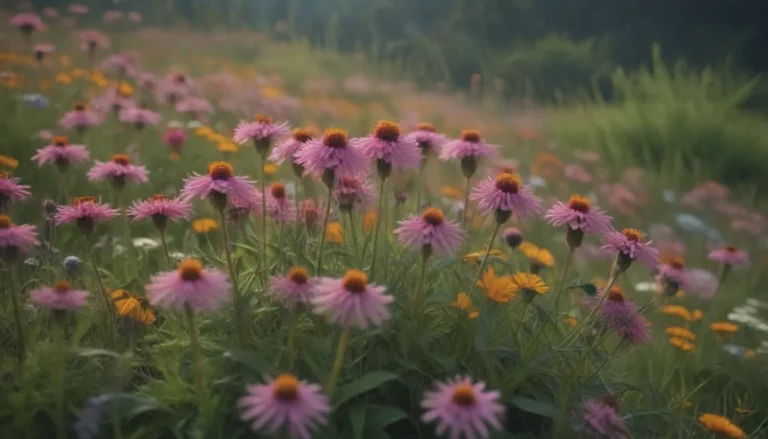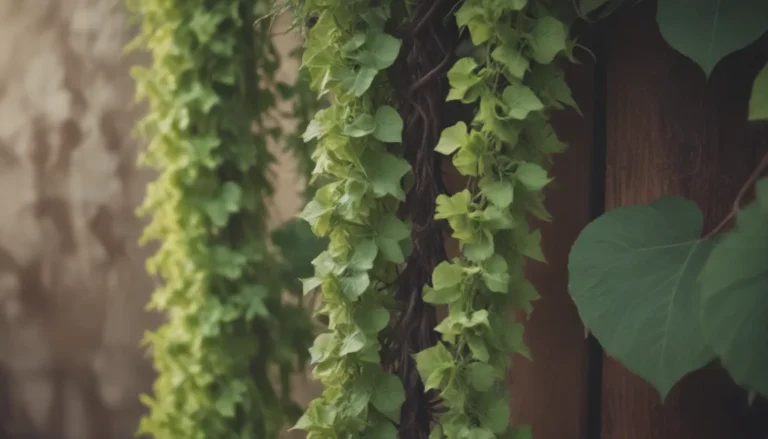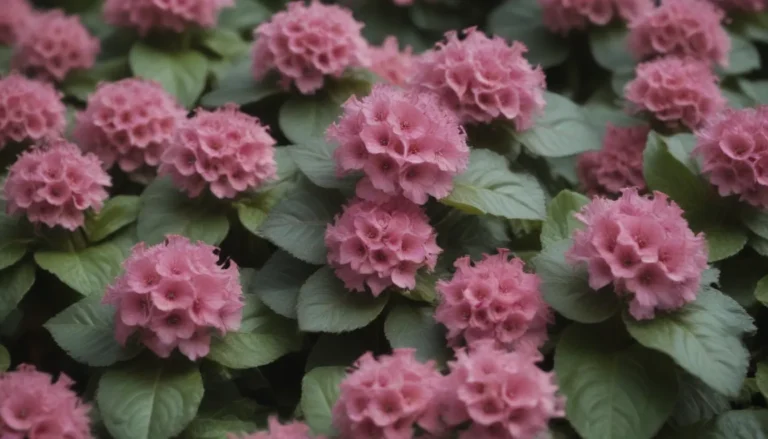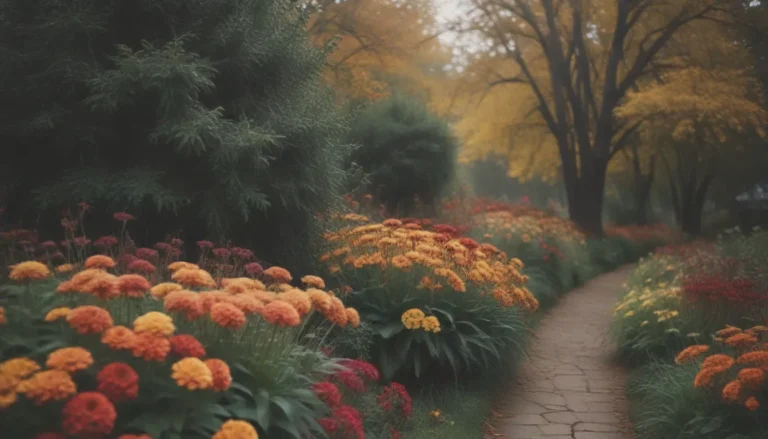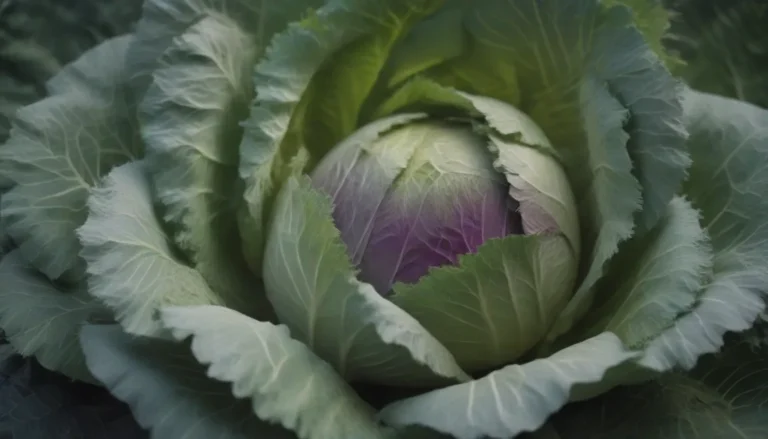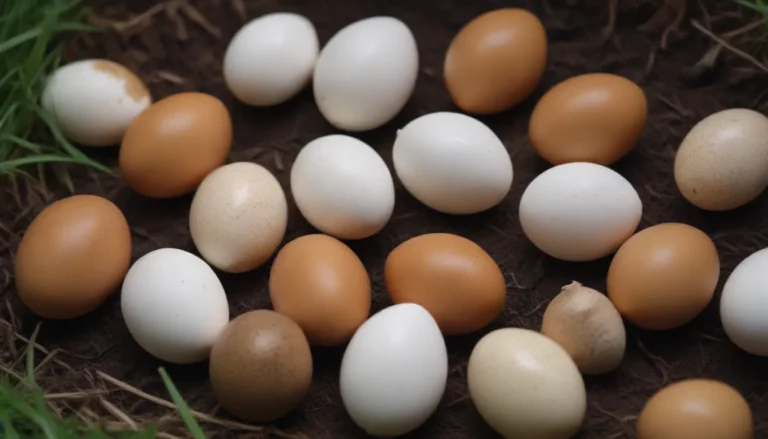Embrace the Beauty of Purple Perennial Flowers in Your Garden
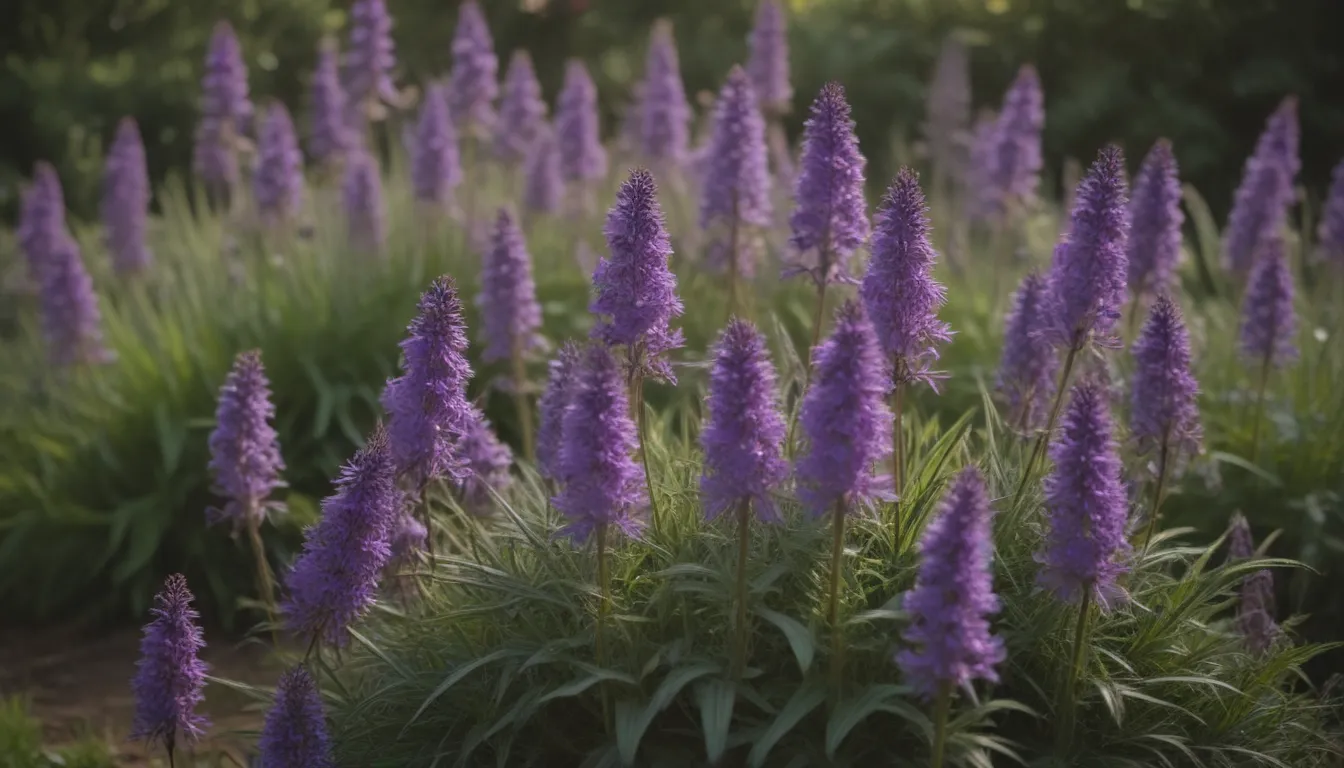
Are you a lover of all things purple? Do you want to add a splash of color that will return year after year in your garden? If so, you’re in luck! There is a wide array of purple perennial flowers that will not only add beauty to your outdoor space but also attract pollinators and create a vibrant, eye-catching display.
In this comprehensive guide, we will explore 25 popular purple perennial flowers that are sure to stand out in your garden. From delicate lavender hues to deep, rich blues, these flowers will add a touch of elegance and charm to any landscape. So grab your gardening gloves and get ready to transform your garden into a haven of purple paradise!
Lavender
Let’s start with everyone’s favorite purple perennial – lavender. Part of the mint family, lavender is known for its fragrant blooms and showy flowers that attract bees. Whether you choose to plant it in a rock garden, pollinator garden, or a container, lavender is a versatile plant that thrives in cool summer areas with well-drained soil.
- Name: Lavender
- Light: Full sun
- Growing Zones: Dependent on variety
- Bloom Time: Summer
Salvia ‘May Night’
For a showy purple bloom, look no further than Salvia ‘May Night’. This rapid-growing plant thrives in full sun and dry, well-draining soil. Perfect for mass plantings in border gardens, Salvia ‘May Night’ is a standout addition to any landscape.
- Name: Salvia ‘May Night’
- Light: Full sun
- Growing Zones: Dependent on variety
- Bloom Time: Dependent on variety
Allium
Make a graphic statement in your garden with Allium, commonly known as ornamental onions. With varieties like A. aflatunense, A. cristophii, and A. caeruleum, you can enjoy stunning purple blooms that are perfect for sunny border gardens and rock gardens.
- Name: Allium
- Light: Full sun
- Growing Zones: Dependent on variety
- Bloom Time: Dependent on variety
Clematis
Add a touch of elegance with Clematis, a woody, perennial vine that boasts large, show-stopping blooms. With varieties like ‘Cezanne’, ‘Blue Explosion’, and ‘Blue Angel’, you can enjoy purple blooms that attract bees, butterflies, and hummingbirds.
- Name: Clematis
- Light: Full sun
- Growing Zones: Dependent on variety
- Bloom Time: Dependent on variety
Delphinium
Delphinium, also known as larkspur, is a beautiful addition to any garden. While it prefers cool summers, it can thrive with afternoon shade in hot climates. With proper care, Delphiniums can produce gorgeous blooms that last throughout the summer and into fall.
- Name: Delphinium
- Light: Full sun to partial shade
- Growing Zones: Zones 7a-9b
- Bloom Time: Spring to fall
Catmint
If you’re looking for a drought-tolerant plant that thrives in full sun, look no further than Catmint. With its spreading form, Catmint is perfect for containers, walkway borders, and rock gardens. Plus, you can enjoy a second wave of flowering by pruning the plant after spring blooms fade.
- Name: Catmint
- Light: Full sun
- Growing Zones: Dependent on variety
- Bloom Time: Dependent on variety
Creeping Phlox
Native to the Appalachian mountain areas, Creeping Phlox is a ground cover that flourishes in full sun to partial shade. ‘Sherwood Purple’ is a top choice for a perfect purple cultivar that is drought-tolerant once established. Ideal for mass planting on slopes to help prevent erosion.
- Name: Creeping Phlox
- Light: Full sun to partial shade
- Growing Zones: Dependent on variety
- Bloom Time: Dependent on variety
Garden Phlox
Another stunning member of the phlox family is Garden Phlox, an erect clump-forming perennial that bursts with beauty from mid-summer to mid-fall. Varieties like ‘David’s Lavender’ or ‘Jeana’ offer the best choices for purple blooms in sun to partial shade conditions.
- Name: Garden Phlox
- Light: Sun to partial shade
- Growing Zones: Dependent on variety
- Bloom Time: Mid-summer to mid-fall
Sedum
For succulent lovers, Sedum is a must-have in your garden. With varieties like ‘Mr. Goodbud’ or ‘Purple Emperor’, you can enjoy purple blooms that thrive in rocky and poor soils. Drought-tolerant and quick to establish, Sedum is a low-maintenance perennial that adds a pop of color to your landscape.
- Name: Sedum
- Light: Full sun
- Growing Zones: Dependent on variety
- Bloom Time: Dependent on variety
New England Aster
If you’re looking for a true purple star in your garden, New England Asters are the perfect pick. These tall, purple flowers bloom from August to October and are a magnet for bees and butterflies. Plus, they make stunning cut flowers for arrangements.
- Name: New England Aster
- Light: Full sun
- Growing Zones: Dependent on variety
- Bloom Time: August to October
Chrysanthemum
For a splash of color in the fall, consider Chrysanthemums with their daisy-like flowers in shades of purple. Look for hardy perennial mums like ‘MammothTM Lavender Daisy’ that will return year after year, even in cold climates.
- Name: Chrysanthemum
- Light: Full sun
- Growing Zones: Dependent on variety
- Bloom Time: Fall
Spotted Dead Nettles
A ground cover that thrives in moist, shady areas, Spotted Dead Nettles offer a variety of purple blooms and silver foliage options. Whether you choose ‘Purple Dragon’, ‘Orchid Frost’, or ‘Ghost’, these plants add a touch of elegance to any garden.
- Name: Spotted Dead Nettles
- Light: Full sun to partial shade
- Growing Zones: Dependent on variety
- Bloom Time: Dependent on variety
Columbine
Attract hummingbirds and pollinators with the short-lived perennial Columbine. With varieties like ‘Early Bird Purple and Blue’, ‘European Purple’, and ‘Purple Alpina’, you can enjoy stunning purple blooms in the spring that add a pop of color to your garden.
- Name: Columbine
- Light: Full sun to partial shade
- Growing Zones: Dependent on variety
- Bloom Time: Spring
Lobelia
Lobelias are a must-have for their stunning blue and purple blooms, like the ‘Sapphire’ cultivar. After the spring bloom, cut back the plant to encourage a second bloom in the fall. Perfect for containers and walkway borders, Lobelia adds a touch of elegance to any garden.
- Name: Lobelia
- Light: Full sun to partial shade
- Growing Zones: Dependent on variety
- Bloom Time: Dependent on variety
Purple Ice Plant
For a low-growing perennial with large, showy flowers, look no further than Purple Ice Plant. With varieties like ‘Early Bird Purple’, ‘Violet Wheels of Wonder’, or ‘Orchid Flash’, you can enjoy blooms from June to October that add a burst of color to your landscape.
- Name: Purple Ice Plant
- Light: Full sun
- Growing Zones: Dependent on variety
- Bloom Time: June to October
Balloon Flower
Balloon flowers are a whimsical addition to any garden, with buds that resemble hot air balloons and open to wide-spread bellflowers. These perennials thrive in full sun to partial shade and well-drained, slightly acidic soil. Deadheading will prolong the bloom season, giving you months of beauty to enjoy.
- Name: Balloon Flower
- Light: Full sun to partial shade
- Growing Zones: Dependent on variety
- Bloom Time: Spring and summer
Purple Coneflower
A member of the daisy family, Purple Coneflower is native to the central and eastern United States. With pinkish-purple flowers that bloom from early summer through mid-fall, Purple Coneflower is a stunning addition to any garden. Look for cultivars in white, pink, orange, and red for added variety.
- Name: Purple Coneflower
- Light: Full sun
- Growing Zones: Dependent on variety
- Bloom Time: Early summer to mid-fall
Monkshood
Resembling a vine with arching stems, Monkshood is a toxic but beautiful addition to any garden. With blue-purple flowers that bloom from August to October, Monkshood adds a touch of drama to your landscape. Native to the eastern United States, this plant is a unique and striking choice for any garden.
- Name: Monkshood
- Light: Full sun to partial shade
- Growing Zones: Dependent on variety
- Bloom Time: August to October
Common Violets
Considered a lawn weed by some, Common Violets produce beautiful purple blooms and heart-shaped leaves. Native to eastern and central North America, Common Violets self-seed and can be used as a groundcover along walls and path edges. Plus, they are deer-resistant, making them a versatile and low-maintenance addition to your garden.
- Name: Common Violets
- Light: Full sun to partial shade
- Growing Zones: Dependent on variety
- Bloom Time: Dependent on variety
Snapdragon
Known for their dragon-shaped blooms, Snapdragons are a short-lived perennial that adds a touch of whimsy to any garden. With varieties like ‘Snapshot Purple’, ‘Speedy Sonnet Purple’, or ‘Chantilly Purple’, you can enjoy vibrant purple flowers that bloom from spring to fall.
- Name: Snapdragon
- Light: Full sun to partial shade
- Growing Zones: Dependent on variety
- Bloom Time: Dependent on variety
Sweet William
Sweet William is a charming addition to any garden, with rounded clusters of purple flowers that range from bicolor to intense purple. In warmer growing areas, Sweet William will self-seed for many years, providing you with a lasting burst of color that requires minimal maintenance.
- Name: Sweet William
- Light: Full sun to partial shade
- Growing Zones: Dependent on variety
- Bloom Time: Dependent on variety
Hardy Geranium
While most geraniums are annuals, Hardy Geraniums are a hybrid cultivar that offers deep magenta-purple flowers. Perfect for groundcover or edging, Hardy Geraniums thrive in sunny conditions and well-drained soil. To keep the plant blooming, deadhead often or trim back before the summer heat sets in.
- Name: Hardy Geranium
- Light: Full sun to partial shade
- Growing Zones: Dependent on variety
- Bloom Time: Dependent on variety
Mr. Fokker Anemone
Known as windflowers for their fluttering blooms, Anemones come in a variety of colors, including the stunning purple cultivar ‘Mr. Fokker’. Planted as a tuber, Anemones are showy and eye-catching, blooming from spring to fall.
- Name: Mr. Fokker Anemone
- Light: Full sun to partial shade
- Growing Zones: Dependent on variety
- Bloom Time: Dependent on variety
Calibrachoa (Million Bells®)
Million Bells is a perennial in warm climates that resembles a petunia. With a height of just three inches but a spread of up to 20 inches, Million Bells produces masses of small flowers in various colors from the start of summer until frost. Look for varieties like ‘Cabaret Purple Glow’, ‘MiniFamous Uno Double PlumTastic’, and ‘Superbells Lavender’ for a pop of purple in your garden.
- Name: Million Bells
- Light: Full sun
- Growing Zones: Dependent on variety
- Bloom Time: Summer to fall
Hardy Ageratum
Last but not least, Hardy Ageratum is a late-summer blooming perennial that adds a touch of blue-purple to your garden. With fluffy clusters of flowers that bloom from July to October, Hardy Ageratum is a showy addition to any landscape. While it spreads aggressively, it is not recommended for smaller planting areas.
- Name: Hardy Ageratum
- Light: Full sun to partial shade
- Growing Zones: Dependent on variety
- Bloom Time: July to October
Conclusion
In conclusion, adding purple perennial flowers to your garden is a surefire way to create a stunning and vibrant outdoor space. Whether you choose delicate lavender hues or deep, rich purples, these flowers are not only beautiful but also attract pollinators and wildlife to your garden.
So, why wait? Transform your garden into a haven of purple paradise with these 25 popular purple perennial flowers that are sure to stand out and make a statement in your landscape. Happy gardening!
